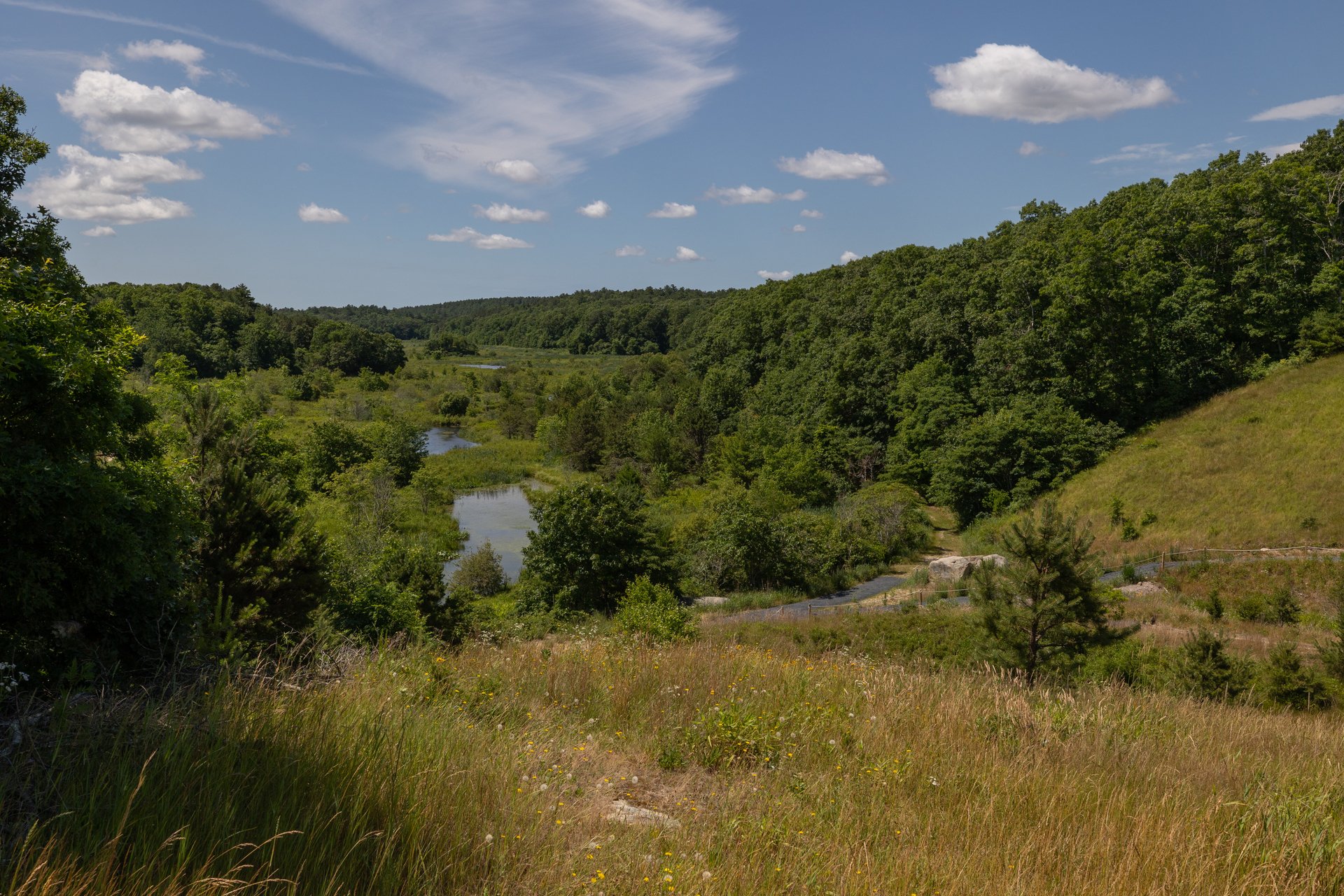History of Tidmarsh Wildlife Sanctuary
Tidmarsh was once a vibrant ecological setting, featuring natural bogs, pristine springs, and a cold-water stream flowing freely to the sea.
Creating a Cranberry Operation
In the 1890s, enterprising farmers transformed the site into cranberry bogs, producing a native fruit that supported an expanded farming economy.
For decades Tidmarsh operated as a successful cranberry farm. Over time, as global cranberry production shifted, the higher cost of production made Tidmarsh less profitable.
Restoring Tidmarsh
In 2010, when they stopped farming cranberries, Tidmarsh's previous owners Evan Schulman, Glorianna Davenport, and their family did something exceptional. Instead of selling their land for development, they committed to restoring the wetlands to their wild splendor.
Along with the Massachusetts Department of Ecological Restoration, they undertook the largest freshwater ecological restoration ever attempted in the Northeast, creating a mosaic of habitats at Tidmarsh including ponds, cold-water streams, red maple and Atlantic white cedar swamps, grasslands, and pine-oak forest.
Nine dams were removed, over three miles of new stream channel were excavated, and thousands of tons of sediment were removed to connect headwaters of Beaver Dam Brook with the ocean for migrating fish such as river herring, brook trout, and American eel.
Almost immediately native plants began emerging and attracting a wide variety of insect, reptile, and bird species that have not been seen on this property for a century or more.



